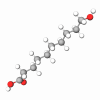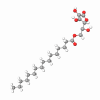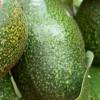The sunflower (Helianthus Annuus) is native to North America's southern regions and was introduced to Europe in the 16th century, by the Spaniard Monardes. Today, it is cultivated in temperate latitudes in Europe, America, China, and India as one of the most important oil-yielding plants on the planet.
Seeds contain =40% pale (refined) to dark yellow (cold-pressed), drying fatty oil which, in turn, contains >85% unsaturated fatty acids, of which linoleic acid accounts for over 2/3rds. Sunflower oil is thus one of the highest-rated edible oils in terms of nutrient physiology. In addition, Helianthus Annuus seed oil is used in the margarine industry, the food industry (salad dressings, mayonnaise), also in the production of surface coatings, colors, and soaps. The acid mixture obtained by means of saponification of sunflower fat is used in the production of lubricants.
An oil derived from peeled seeds of Helianthus Annuus (Sunflower). It is a light yellow liquid and mainly consists of oleic and linoleic unsaturated fatty acids. In addition, Helianthus Annuus seed oil contains vitamins A, C, D, and E.
Sunflower seed oil has a relatively higher content of linoleic acid (omega-9) in comparison with olive oil which makes it a proper ingredient in skincare products due to the many positive beneficial effects. Helianthus Annuus seed oil will not irritate the skin or aggravate acne.Helianthus Annus Seed oil preserves the integrity of the epidermis and promotes hydration of the skin without causing erythema. Linoleic acid improves keratinocyte proliferation and induces lipid synthesis boosting skin barrier recovery and supporting homeostasis. It is used in skin care formulations such as creams and lotions and in massage oils.











